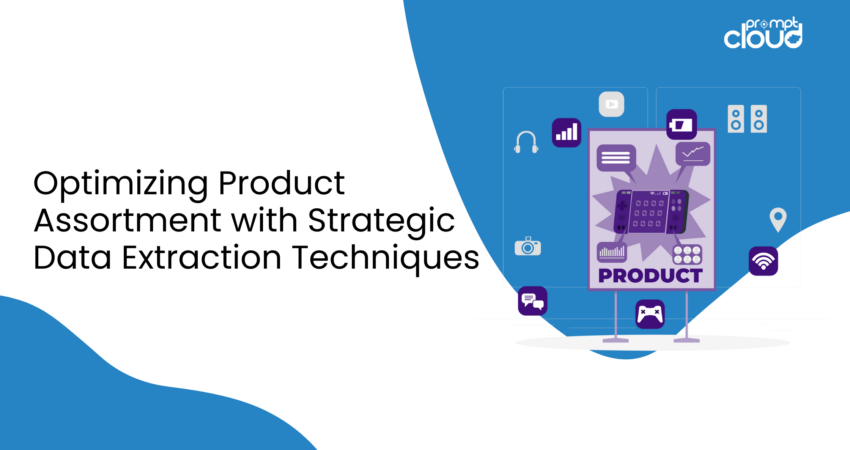
The Importance of Product Assortment Optimization
In the competitive world of retail, having the right product assortment is crucial for success. Product assortment optimization ensures that retailers offer the right mix of products to meet customer needs, drive sales, and enhance the overall shopping experience.

Source: retaildogma
Role of Product Assortment in Retail Success
Product assortment plays a vital role in attracting and retaining customers. A well-optimized assortment can:

Source: eClerxDigital
- Meet Customer Expectations: Offering a diverse range of products that cater to various customer preferences increases satisfaction and loyalty.
- Increase Sales and Profits: By stocking high-demand products and eliminating underperforming items, retailers can boost sales and improve profitability.
- Enhance Brand Image: A carefully curated assortment reflects the brand’s identity and can attract the target demographic more effectively.
The Impact of Data-Driven Decisions on Product Assortment
Leveraging data to inform product assortment decisions can significantly enhance retail performance. Data-driven strategies provide insights into:
- Customer Preferences and Trends: Understanding what customers want and predicting future trends helps in tailoring the product mix to meet market demand.
- Competitive Landscape: Analyzing competitor offerings and pricing strategies allows retailers to position their products more effectively.
- Inventory Management: Accurate demand forecasting and stock optimization reduce the risk of overstocking or stockouts, ensuring a balanced inventory.
By incorporating data extraction techniques, retailers can gather valuable insights that drive strategic assortment decisions, ultimately leading to improved customer satisfaction and business growth.
The Role of Data Extraction in Product Assortment
What is Data Extraction and Why is it Crucial?

Source: zapier
Data extraction techniques refers to the process of retrieving and collecting relevant information from various sources to analyze and make informed decisions. In the context of product assortment, data extraction is crucial because it provides actionable insights that help retailers:
- Understand Market Dynamics: By extracting data on sales, customer behavior, and market trends, retailers can stay ahead of the curve and adapt their product offerings to changing demands.
- Enhance Decision-Making: Data-driven insights enable precise decision-making, reducing the risk of stocking unpopular products and increasing the chances of stocking high-demand items.
- Optimize Inventory Management: Effective data extraction helps in forecasting demand accurately, thus minimizing inventory costs and maximizing availability of popular products.
Key Data Sources for Product Assortment Optimization
To effectively optimize product assortment, retailers need to tap into a variety of data sources:
- Customer Data:
- Customer purchase history reveals preferences and buying patterns.
- Demographic data provides insights into the characteristics of the customer base, enabling targeted assortment strategies.
- Competitor Data:
- Monitoring competitor pricing, promotions, and product offerings helps in positioning products competitively.
- Web scraping tools can be used to gather real-time data on competitor activities.
- Market Trends:
- Social media and online reviews offer valuable feedback on customer preferences and emerging trends.
- Industry reports and market research provide a broader perspective on market dynamics and future trends.
- Inventory Data:
- Analyzing stock levels and turnover rates ensures optimal inventory management.
- Identifying slow-moving items helps in making decisions about markdowns or discontinuations.
By leveraging these data sources, retailers can develop a comprehensive understanding of the factors influencing product assortment, leading to more strategic and profitable decisions.
Identifying Customer Preferences and Trends
Using Data Extraction Techniques to Analyze Customer Behavior
Understanding customer behavior is essential for optimizing product assortment. Data extraction techniques can help retailers gain deep insights into customer preferences and buying patterns by analyzing:
- Purchase History:
- Extracting data from transaction records to identify frequently purchased items and popular product categories.
- Analyzing repeat purchases to understand loyalty towards specific products or brands.
- Browsing Behavior:
- Tracking website navigation patterns to see which products are viewed most often.
- Monitoring search queries to identify products that customers are actively seeking.
- Customer Segmentation:
- Using demographic and psychographic data to segment customers into distinct groups.
- Tailoring product assortments to meet the specific needs and preferences of each segment.
- Customer Feedback:
- Analyzing feedback from customer surveys and support interactions to identify common pain points and desired features.
- Monitoring return and refund data to understand dissatisfaction reasons and product quality issues.
Leveraging Social Media and Review Sites for Trend Analysis
Social media platforms and review sites are rich sources of real-time data on customer preferences and emerging trends.

Source: fastercapital
Retailers can leverage these platforms to stay ahead of the curve by:
- Social Listening:
- Using tools to monitor mentions, hashtags, and discussions related to specific products or categories.
- Identifying trending topics and viral products that may influence customer demand.
- Sentiment Analysis:
- Analyzing sentiment in social media posts and reviews to gauge customer satisfaction and perception of products.
- Detecting positive or negative trends to inform product assortment decisions.
- Influencer Insights:
- Tracking endorsements and product mentions by influencers to understand their impact on customer preferences.
- Collaborating with influencers to promote products that align with current trends.
- Review Analysis:
- Extracting and analyzing data from product reviews on e-commerce sites to identify common themes and customer sentiments.
- Using reviews to gather insights into product features that customers value or find lacking.
- Trend Forecasting:
- Combining social media data with other market research to predict upcoming trends and shifts in customer preferences.
- Adapting product assortments proactively based on forecasted trends.
By effectively using data extraction techniques to analyze customer behavior and leveraging insights from social media and review sites, retailers can create product assortments that resonate with their target audience and drive sales.
Competitive Analysis through Data Extraction
Monitoring Competitor Product Offerings and Pricing Strategies
Staying ahead in the competitive retail market requires continuous monitoring of competitor activities. Data extraction techniques plays a crucial role in gathering detailed information on competitor product offerings and pricing strategies:
- Product Assortment Analysis:
- Identifying the range of products competitors offer, including new product launches and discontinued items.
- Analyzing the variety within product categories to understand gaps and opportunities in your own assortment.
- Pricing Strategies:
- Tracking competitor pricing on similar products to ensure competitive pricing.
- Monitoring promotions, discounts, and seasonal pricing trends to inform your own pricing strategies.
- Product Performance:
- Examining best-selling products and categories at competitors to identify high-demand items.
- Understanding which products are frequently out of stock or on backorder, indicating high demand or supply chain issues.
- Customer Feedback:
- Analyzing reviews and ratings of competitor products to identify strengths and weaknesses.
- Understanding customer sentiment towards competitor brands and products to refine your offerings.
Utilizing Web Scraping to Gather Competitor Data
Web scraping is a powerful tool for automating the collection of competitor data from online sources. This technique involves extracting large volumes of data from websites to gain insights into competitor activities. Here’s how you can use web scraping for competitive analysis:
- Automated Data Collection:
- Setting up web scraping tools to regularly extract data from competitor websites, e-commerce platforms, and marketplaces.
- Collecting data on product listings, prices, availability, and promotions without manual intervention.
- Real-Time Price Monitoring:
- Continuously tracking competitor prices to identify changes and trends.
- Implementing dynamic pricing strategies based on real-time competitor data to stay competitive.
- Inventory Tracking:
- Monitoring competitor stock levels and availability to anticipate market demand and supply chain issues.
- Adjusting your inventory strategy based on competitor stockouts or high inventory levels.
- Feature Comparison:
- Extracting detailed product specifications and features to compare with your offerings.
- Identifying unique selling points and areas where your products can be improved or differentiated.
By leveraging web scraping for competitive analysis, retailers can gather comprehensive and up-to-date information on competitor activities, allowing them to make informed decisions and maintain a competitive edge in the market.
Inventory Management and Stock Optimization
Reducing Overstock and Stockouts with Predictive Analytics
Predictive analytics leverages advanced data techniques to optimize inventory levels, minimizing both overstock and stockouts:
- Predictive Modeling:
- Developing predictive models that consider historical sales data, market trends, and external factors to forecast demand.
- Continuously refining models with new data to improve accuracy and reliability.
- Dynamic Inventory Adjustment:
- Using real-time data to adjust inventory levels dynamically based on current sales trends and market conditions.
- Implementing automated reorder systems that trigger restocks when inventory falls below predefined thresholds.
- Safety Stock Optimization:
- Calculating optimal safety stock levels to buffer against demand variability and lead time fluctuations.
- Balancing the cost of carrying excess inventory with the risk of stockouts to determine the ideal safety stock.
- Demand Sensing:
- Utilizing demand sensing techniques to detect short-term changes in demand patterns.
- Integrating data from multiple sources, such as point-of-sale systems, social media, and market reports, to enhance demand sensing capabilities.
- Inventory Turnover Analysis:
- Monitoring inventory turnover rates to assess the efficiency of inventory utilization.
- Identifying slow-moving items to implement strategies such as markdowns, promotions, or discontinuation.
- Supplier Collaboration:
- Collaborating closely with suppliers to improve lead times and ensure a steady supply of high-demand products.
- Sharing demand forecasts with suppliers to facilitate better production planning and inventory management.
By leveraging predictive analytics, retailers can optimize their inventory management processes, ensuring they have the right products in the right quantities at the right time. This not only improves customer satisfaction by reducing stock outs but also minimizes carrying costs and waste associated with overstock.
Challenges and Solutions in Data Extraction for Product Assortment
Common Obstacles in Data Extraction Techniques
Data extraction for optimizing product assortment can present several challenges. Understanding these obstacles is crucial for developing effective solutions:
- Data Quality and Accuracy:
- Inconsistent or incomplete data can lead to inaccurate insights and poor decision-making.
- Data from various sources might not be standardized, making it difficult to aggregate and analyze.
- Scalability:
- Extracting data at scale, especially from multiple sources, can be resource-intensive and complex.
- Ensuring that the data extraction process can handle large volumes of data without performance issues.
- Data Privacy and Compliance:
- Adhering to data privacy laws and regulations, such as GDPR, is essential to avoid legal repercussions.
- Ensuring that data extraction techniques and practices comply with website terms of service and ethical guidelines.
- Unstructured Data:
- Extracting useful information from unstructured data sources like social media, reviews, and images can be challenging.
- Natural language processing (NLP) and image recognition technologies are required to make sense of unstructured data.
- Dynamic Web Content:
- Websites with dynamically generated content or JavaScript-heavy pages can be difficult to scrape.
- Handling CAPTCHA and anti-scraping mechanisms implemented by websites to prevent automated data extraction techniques.
Tools and Technologies to Overcome These Challenges
Several tools and technologies can help address the challenges associated with data extraction for product assortment optimization:
- Data Cleaning and Transformation Tools:
- Using ETL (Extract, Transform, Load) tools like Talend, Apache NiFi, or Alteryx to clean and standardize data from various sources.
- Implementing data validation and enrichment processes to ensure high data quality and accuracy.
- Scalable Data Extraction Solutions:
- Leveraging cloud-based platforms like AWS, Google Cloud, or Azure for scalable data extraction and storage solutions.
- Utilizing distributed data processing frameworks like Apache Hadoop and Apache Spark to handle large datasets efficiently.
- Natural Language Processing (NLP) and Machine Learning:
- Employing NLP libraries and frameworks like spaCy, NLTK, or TensorFlow for extracting insights from unstructured text data.
- Using machine learning models to classify, cluster, and analyze text data for trend analysis and sentiment detection.
- Web Scraping Tools and Frameworks:
- Utilizing web scraping frameworks like Scrapy, Beautiful Soup, or Selenium to extract data from dynamic web pages.
- Implementing headless browsers like Puppeteer or Playwright to navigate and interact with JavaScript-heavy websites.
- Anti-Scraping Bypass Techniques:
- Using techniques like rotating IP addresses, proxy servers, and CAPTCHA-solving services to bypass anti-scraping measures.
- Implementing rate limiting and user-agent rotation to mimic human browsing behavior and reduce the risk of being blocked.
Conclusion
In today’s fast-paced retail environment, relying on intuition alone is no longer sufficient. A data-driven approach is essential for:
- Adapting to Market Changes: By leveraging data, retailers can quickly adapt to changing market conditions and customer preferences.
- Enhancing Efficiency: Data extraction techniques and analysis streamline operations, reducing manual effort and increasing efficiency.
- Driving Innovation: Data-driven insights foster innovation, allowing retailers to experiment with new product assortments and strategies confidently.
- Ensuring Long-Term Success: A strategic approach to data extraction and product assortment optimization lays the foundation for sustainable growth and long-term success.
To fully leverage the power of data extraction and optimize your product assortment, consider partnering with experts who can provide the necessary tools and insights. At PromptCloud, we specialize in advanced data extraction solutions tailored to your retail needs. Ready to transform your product assortment strategy with data-driven insights? Contact PromptCloud today to learn how our data extraction solutions can help you maximize your ROI. Reach out for more information or to schedule a demo and see our services in action.



















